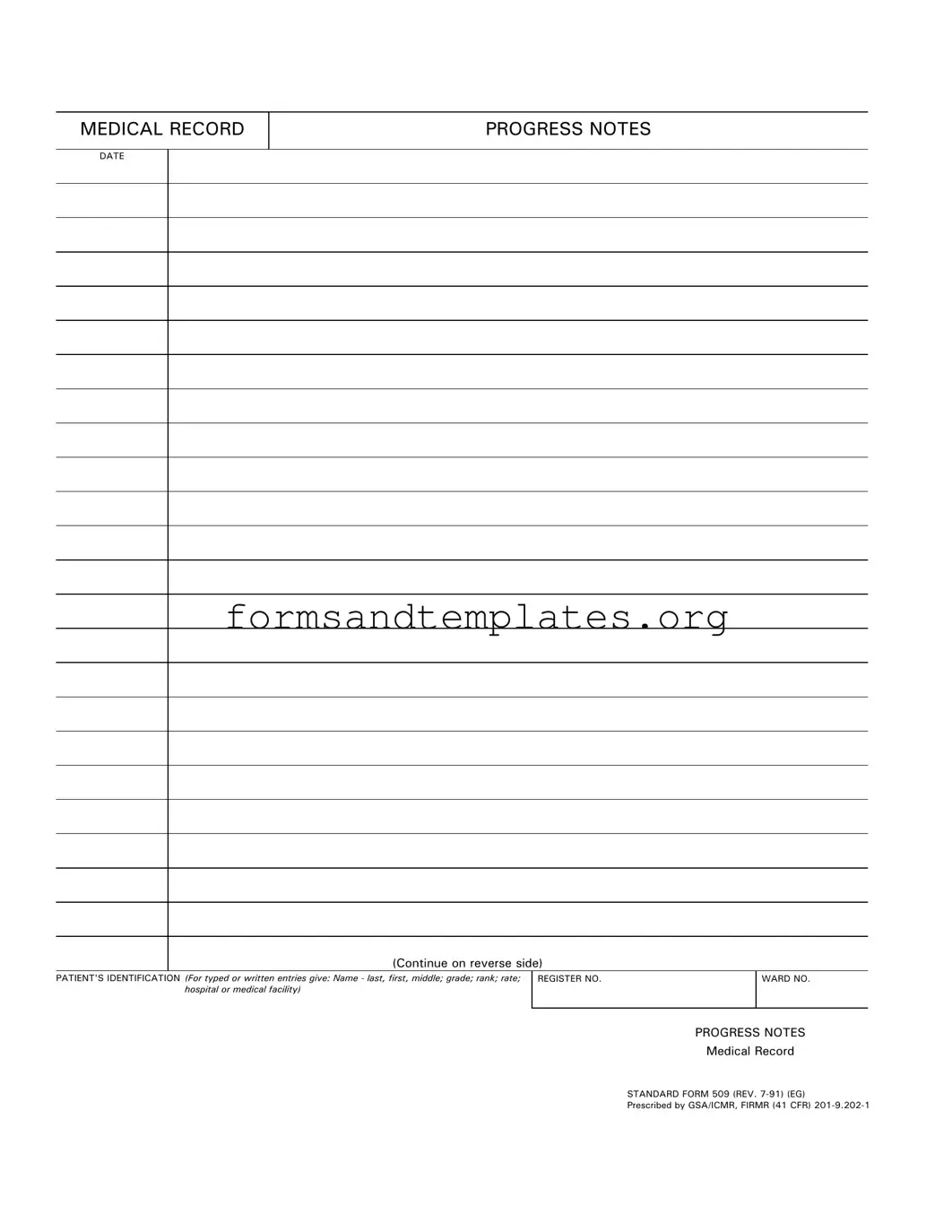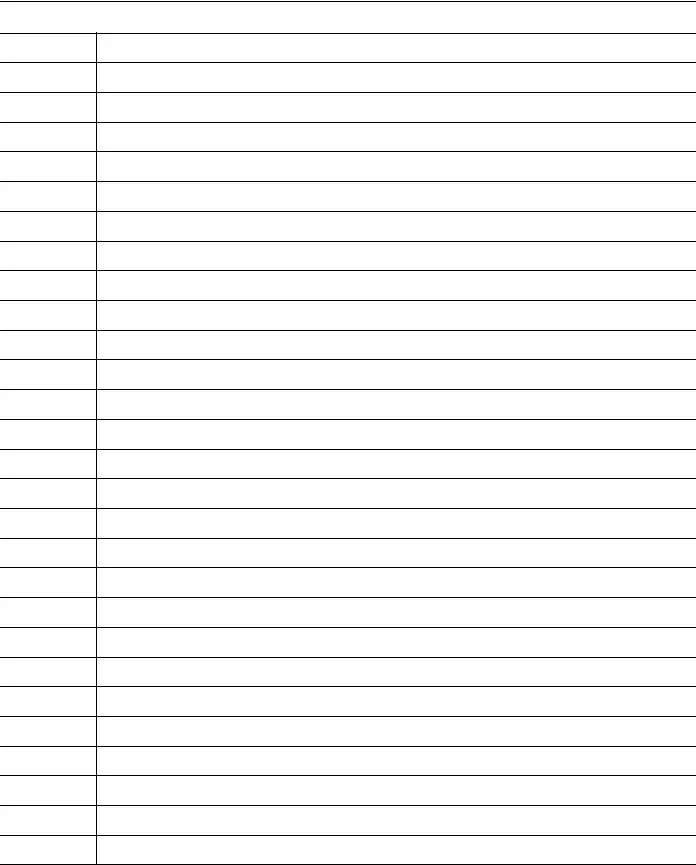The Progress Notes form is a standardized document used in medical settings to record a patient's ongoing treatment and condition. It helps healthcare providers keep track of a patient's progress over time, ensuring that everyone involved in the patient's care has access to the same information.
To complete the form, you will need to provide the following information:
-
Patient's name (last, first, middle)
-
Patient's grade, rank, or rate
-
The hospital or medical facility where the patient is receiving care
-
Registration number and ward number
-
The date of the entry
This form is crucial for several reasons. It allows healthcare providers to:
-
Document the patient's condition and treatment over time.
-
Ensure continuity of care by providing a clear record for other medical professionals.
-
Facilitate communication between different members of the healthcare team.
Typically, healthcare providers such as doctors, nurses, and therapists are responsible for completing the Progress Notes form. However, any member of the healthcare team who interacts with the patient may contribute to the notes, ensuring a comprehensive view of the patient's care.
Updates to the Progress Notes form should occur regularly, often during each patient visit or treatment session. This ensures that the information remains current and accurately reflects the patient's status and treatment plan.
Yes, the Progress Notes form can be adapted for electronic health records (EHR). Many healthcare facilities have transitioned to digital systems that allow for the same information to be recorded electronically, maintaining the same structure and purpose as the paper form.
If you make an error, it’s important to correct it properly. Cross out the mistake with a single line, and initial and date the correction. This maintains the integrity of the record while ensuring that the information remains accurate.
Yes, the Progress Notes form is a legal document. Accurate and thorough documentation can protect healthcare providers in case of disputes or audits. It’s essential to ensure that all entries are truthful, clear, and made in a timely manner.
The Progress Notes form is often available through medical facilities or can be obtained from the appropriate regulatory bodies. It is also accessible online through various healthcare resources that provide standardized forms.
While there is no rigid format, it’s recommended to follow a clear and concise structure. Use headings or bullet points for different sections, and ensure that the notes are legible and organized. This helps in making the information easily understandable for anyone reviewing the notes.


